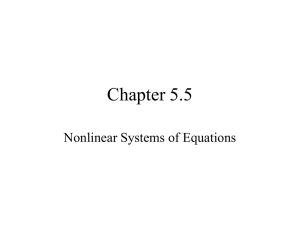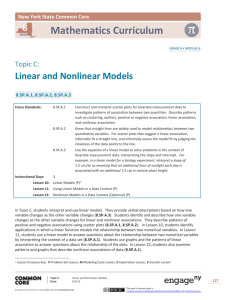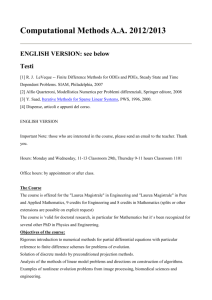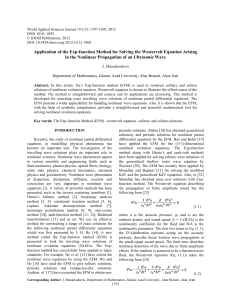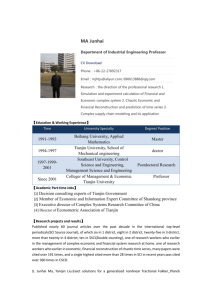Inverse problems and inversion methods for
advertisement
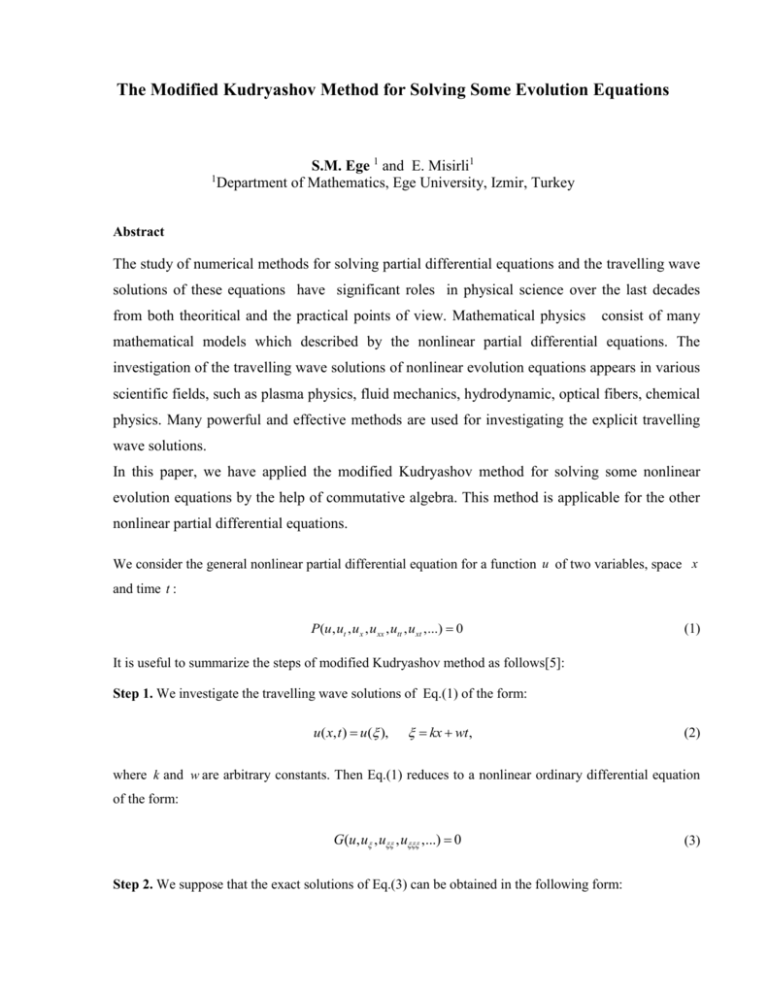
The Modified Kudryashov Method for Solving Some Evolution Equations S.M. Ege 1 and E. Misirli1 1 Department of Mathematics, Ege University, Izmir, Turkey Abstract The study of numerical methods for solving partial differential equations and the travelling wave solutions of these equations have significant roles in physical science over the last decades from both theoritical and the practical points of view. Mathematical physics consist of many mathematical models which described by the nonlinear partial differential equations. The investigation of the travelling wave solutions of nonlinear evolution equations appears in various scientific fields, such as plasma physics, fluid mechanics, hydrodynamic, optical fibers, chemical physics. Many powerful and effective methods are used for investigating the explicit travelling wave solutions. In this paper, we have applied the modified Kudryashov method for solving some nonlinear evolution equations by the help of commutative algebra. This method is applicable for the other nonlinear partial differential equations. We consider the general nonlinear partial differential equation for a function u of two variables, space x and time t : P(u , ut , u x , u xx , utt , u xt ,...) 0 (1) It is useful to summarize the steps of modified Kudryashov method as follows[5]: Step 1. We investigate the travelling wave solutions of Eq.(1) of the form: u( x, t ) u( ), kx wt , (2) where k and w are arbitrary constants. Then Eq.(1) reduces to a nonlinear ordinary differential equation of the form: G(u, u , u , u ,...) 0 Step 2. We suppose that the exact solutions of Eq.(3) can be obtained in the following form: (3) N u ( ) y ( ) ai Q i , (4) i 0 where Q 1 and the function Q is the solution of equation 1 e Q Q 2 Q (5) Step 3. According to the method, we assume that the solution of Eq.(3) can be expressed in the form u( ) aN QN ... (6) Calculation of value N in formula (6) that is the pole order for the general solution of Eq. (3). In order to determine the value of N we balance the highest order nonlinear terms in Eq. (3) analogously as in the classical Kudryashov method. Supposing ul ( )u ( s ) ( ) and (u p ( ))r are the highest order nonlinear terms of Eq. (3) and balancing the highest order nonlinear terms we have: N s rp , r l 1 (7) Step 4. Substituting Eq.(4) into Eq.(3) and equating the coefficients of Q i to zero, we get a system of algebraic equations. By solving this system, we obtain the exact solutions of Eq.(1). References [1] Kudryashov N A 2012 One method for finding exact solutions of nonlinear differential equations Commun. Nonlinear Sci. 17 2248–2253 [2] Kudryashov N A 1990 Exact solutions of the generalized Kuramoto–Sivashinsky equation Phys. Lett. A 147 287–91 [3] Kabir M M, Khajeh A, Aghdam E A, Koma A Y 2011 Modified Kudryashov method for finding exact solitary wave solutions of hihher-order nonlinear equations Math. Methods Appl. Sci. 35 213-219 [4] Kabir M M 2011 Modified Kudryashov method for generalized forms of the nonlinear heat conduction equation Int. J. Phys. Sci. 6 6061-6064 [5] Pandir Y, Gurefe Y, Misirli E 2012 A new approach to Kudryashov's method for solving some nonlinear physical models Int. J. Phys. Sci.7 2860-2866 [6] Ryabov P N, Sinelshchikov D I, Kochanov M B 2011 Application of Kudryashov method for finding exact solutions of higher order nonlinear evolution equations Appl. Math.Comput. 218 3965-3972



